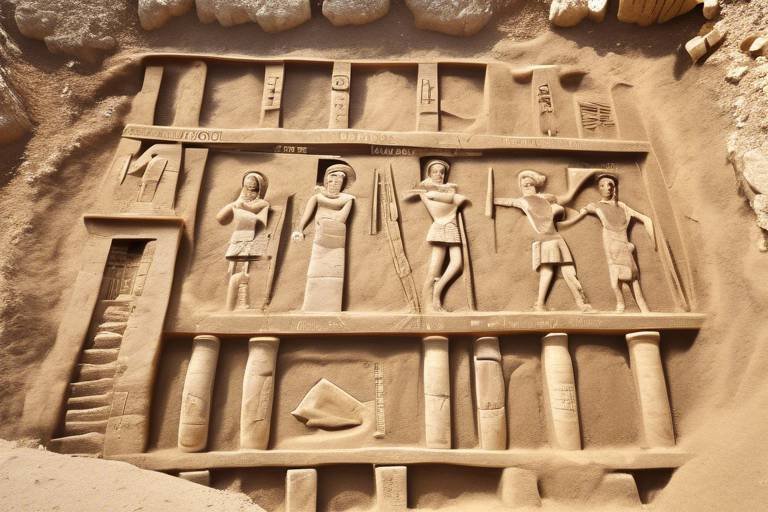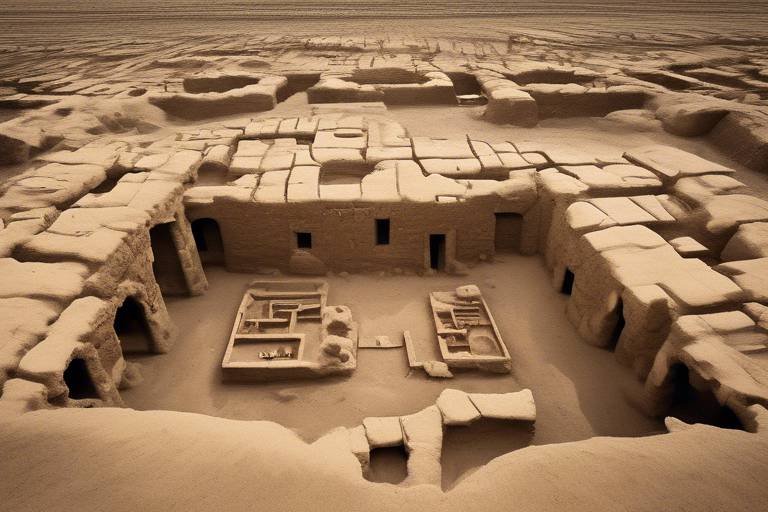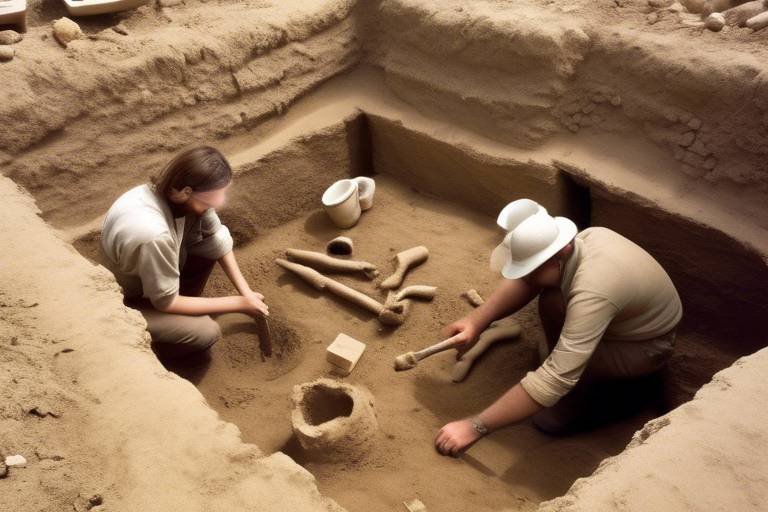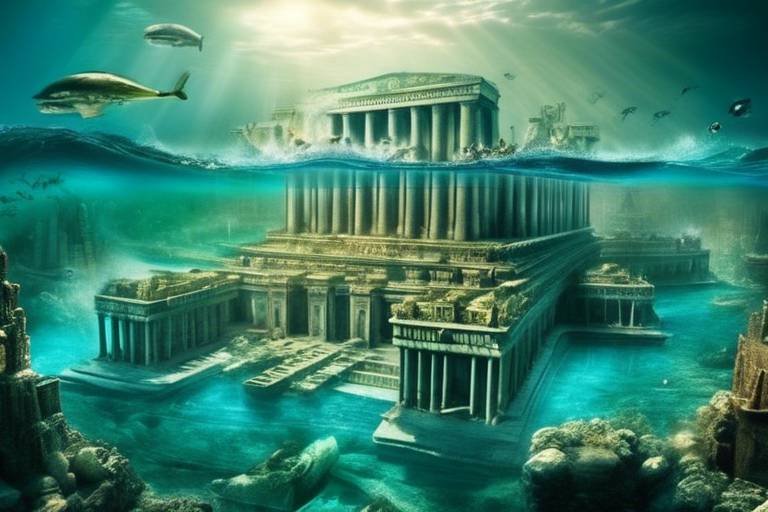Archaeological Sites as Educational Resources
Archaeological sites are not just remnants of the past; they are living educational resources that offer a window into ancient civilizations and their ways of life. These sites hold a treasure trove of knowledge waiting to be unearthed, providing invaluable insights into history, culture, and human evolution. By exploring these archaeological sites, students, researchers, and the general public can embark on a journey of discovery, delving deep into the mysteries of the past.
Imagine walking through the ruins of an ancient city, feeling the echoes of a bygone era reverberate through the stones beneath your feet. The interactive learning experiences offered at archaeological sites go beyond textbooks and lectures, allowing visitors to immerse themselves in history through hands-on activities and guided tours. These experiences not only enhance historical knowledge but also foster a sense of connection with the past, making the past come alive in a tangible and unforgettable way.
One of the most crucial roles of archaeological sites is the preservation of cultural heritage. These sites act as guardians of the past, safeguarding the remnants of ancient civilizations for future generations to appreciate and learn from. Through meticulous excavation and conservation efforts, archaeological sites ensure that the rich tapestry of human history is preserved intact, allowing us to glimpse into the lives of our ancestors and understand the roots of our present-day societies.
Moreover, archaeological sites serve as hubs for research and discovery, offering a glimpse into the technological advancements, cultural practices, and societal structures of ancient civilizations. Through excavation and analysis, researchers can unravel the mysteries of the past, piecing together the puzzle of human history and shedding light on the complexities of ancient societies.
Community engagement is another vital aspect of archaeological sites, as they serve as focal points for local pride, tourism, and economic development. By promoting awareness of cultural history and heritage, these sites not only enrich the lives of residents but also attract visitors from far and wide, boosting tourism revenue and fostering a sense of shared heritage among diverse communities.
Interdisciplinary studies thrive in the realm of archaeological sites, where fields such as history, anthropology, geology, and conservation converge to offer a holistic understanding of the past. By bringing together experts from various disciplines, these sites provide a platform for collaborative research and knowledge exchange, enriching our understanding of ancient civilizations and their enduring legacies.
Technology and innovation play a significant role in enhancing the educational experiences offered at archaeological sites. From 3D scanning to virtual reconstructions and digital storytelling, technology has revolutionized archaeological research, allowing visitors to engage with the past in innovative and immersive ways. These advancements not only enrich educational experiences but also contribute to the preservation and documentation of archaeological sites for future generations.
As we strive to promote sustainable tourism practices, it is essential to balance visitor access with conservation efforts at archaeological sites. By implementing responsible tourism practices, we can ensure the long-term preservation of these sites, safeguarding them for future generations while fostering community involvement and environmental stewardship.
Archaeological sites transcend borders, serving as platforms for global perspective and cultural exchange. Through cross-cultural dialogue, collaboration, and the sharing of knowledge, these sites facilitate a deeper understanding of our shared human heritage, fostering a sense of unity and interconnectedness among people from diverse backgrounds. In a world where cultural exchange is more critical than ever, archaeological sites stand as beacons of knowledge and understanding, bridging the gap between past and present.
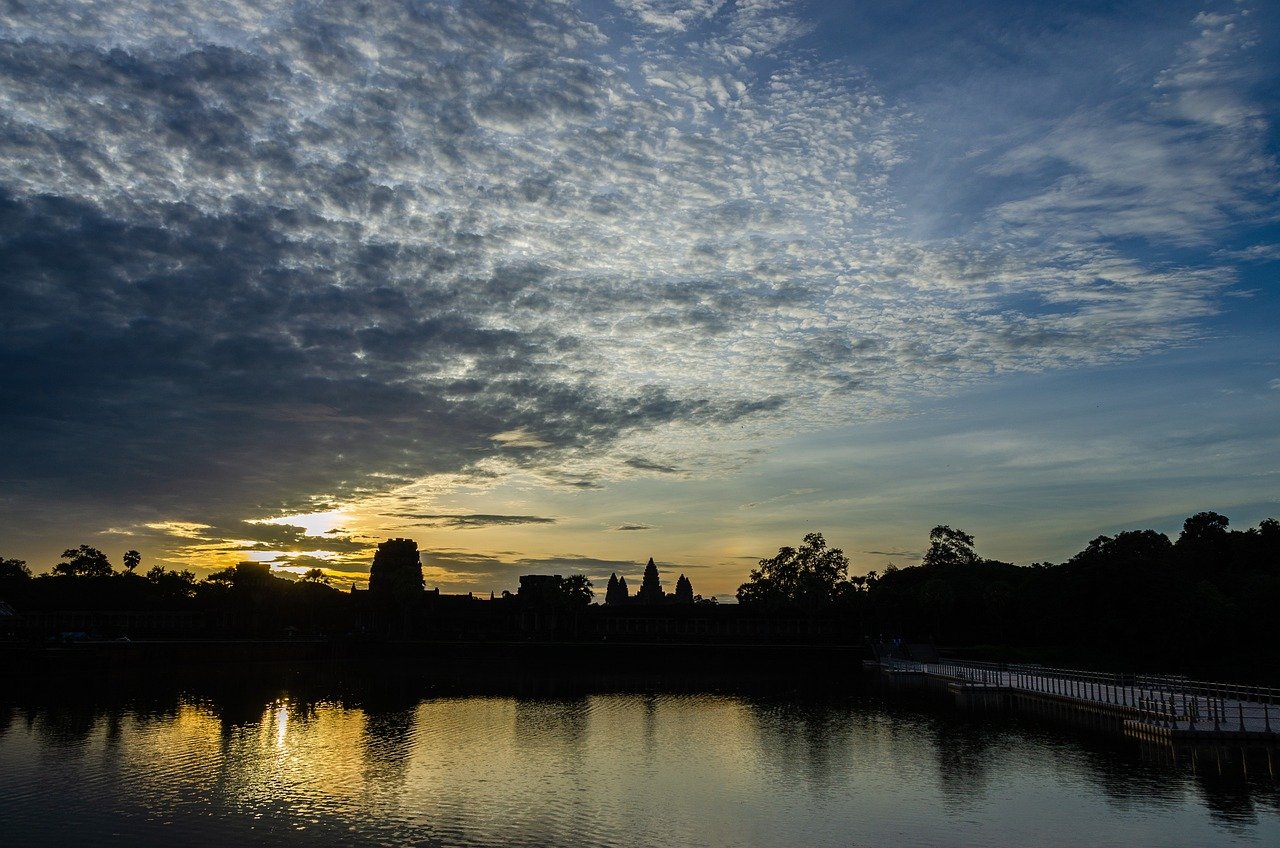
Interactive Learning Experiences
Exploring how ancient archaeological sites offer valuable educational opportunities for students, researchers, and the general public, fostering a deeper understanding of history, culture, and human civilization.
Engaging hands-on activities and guided tours at archaeological sites provide immersive learning experiences that enhance historical knowledge and promote a sense of connection with the past. These interactive experiences allow visitors to step into the shoes of ancient civilizations, uncovering the mysteries of the past through exploration and engagement. Imagine walking through the ruins of a once-thriving city, touching ancient artifacts, and participating in archaeological digs to unearth hidden treasures. Such experiences not only educate but also captivate, leaving a lasting impact on individuals of all ages.

Preservation of Cultural Heritage
Preservation of cultural heritage through archaeological sites is akin to safeguarding a time capsule filled with the essence of bygone eras. These sites act as guardians of our collective history, preserving the remnants of ancient civilizations for present and future generations to explore and learn from. Imagine walking through the ruins of an ancient city, feeling the whispers of the past echoing through the stones, connecting you to the lives and stories of those who once thrived there.
Archaeological sites serve as windows into the past, allowing us to glimpse the cultural practices, artistic achievements, and societal structures of civilizations long gone. Through meticulous excavation and conservation efforts, these sites offer a tangible link to our roots, enabling us to appreciate the diversity and richness of human heritage. It's like piecing together a giant puzzle where each artifact and structure tells a unique story, contributing to the tapestry of human history.
Moreover, the preservation of cultural heritage at archaeological sites is not just about protecting physical remains; it's also about safeguarding intangible aspects such as traditions, beliefs, and knowledge systems. By ensuring the longevity of these sites, we are not only preserving historical artifacts but also the intangible heritage that defines who we are as a global society. It's a delicate balance between conservation and interpretation, where the past is not just preserved but also interpreted and shared with the world.
Furthermore, the significance of cultural heritage preservation extends beyond mere nostalgia or academic interest. It fosters a sense of identity and belonging, instilling pride in communities and nations by showcasing their cultural legacy. It's about celebrating diversity and recognizing the contributions of past civilizations to the tapestry of human experience. By safeguarding cultural heritage at archaeological sites, we are not just protecting the past; we are also shaping the future by learning from our ancestors and building a more inclusive and culturally rich world.

Research and Discovery
Exploring how ancient archaeological sites offer valuable educational opportunities for students, researchers, and the general public, fostering a deeper understanding of history, culture, and human civilization.
The realm of archaeological sites is not just about exploring ancient ruins; it's a gateway to unlocking the mysteries of bygone eras. These sites act as time capsules, preserving remnants of past civilizations that hold clues to our origins and evolution. Through meticulous excavation and analysis, researchers delve into the artifacts and structures, piecing together narratives of ancient societies. It's a journey of discovery, where each find unravels a new chapter in the story of humanity.
Imagine standing at the excavation site where ancient artifacts are unearthed, feeling the thrill of uncovering relics that have been buried for centuries. The process of research and discovery at archaeological sites is like solving a complex puzzle, with each artifact providing a piece of the historical narrative. Scholars and archaeologists meticulously study these findings, decoding the past to shed light on the present.
Moreover, archaeological sites are not just static repositories of the past; they are living laboratories of history. Through advanced scientific techniques and interdisciplinary collaborations, researchers are pushing the boundaries of knowledge, uncovering hidden truths about ancient societies. From analyzing ancient DNA to studying the evolution of technology, these sites offer a treasure trove of information waiting to be unearthed.
The significance of research and discovery at archaeological sites goes beyond academic pursuits. It's about connecting with our shared human heritage, understanding the complexities of our past, and gaining insights that can shape our future. Each excavation, each discovery, is a testament to human curiosity and the relentless quest for knowledge that defines us as a species.

Community Engagement
Exploring how ancient archaeological sites offer valuable educational opportunities for students, researchers, and the general public, fostering a deeper understanding of history, culture, and human civilization.
Archaeological sites play a crucial role as focal points for community engagement, acting as bridges between the past and the present. These sites not only preserve historical artifacts but also serve as catalysts for local pride and economic development.
Imagine a bustling town square where locals and tourists alike gather to marvel at the remnants of an ancient civilization, sharing stories and insights that transcend time. This vibrant exchange of knowledge and culture breathes life into the archaeological site, turning it into a vibrant hub of activity.
Through community engagement initiatives such as guided tours, workshops, and cultural events, archaeological sites become more than mere relics of the past—they become living, breathing entities that connect people from all walks of life. Visitors are not just spectators but active participants in unraveling the mysteries of history.
Moreover, by involving the community in the preservation and promotion of archaeological sites, a sense of ownership and responsibility is instilled. Locals become stewards of their heritage, working hand in hand with experts to ensure the site's longevity for future generations to enjoy.
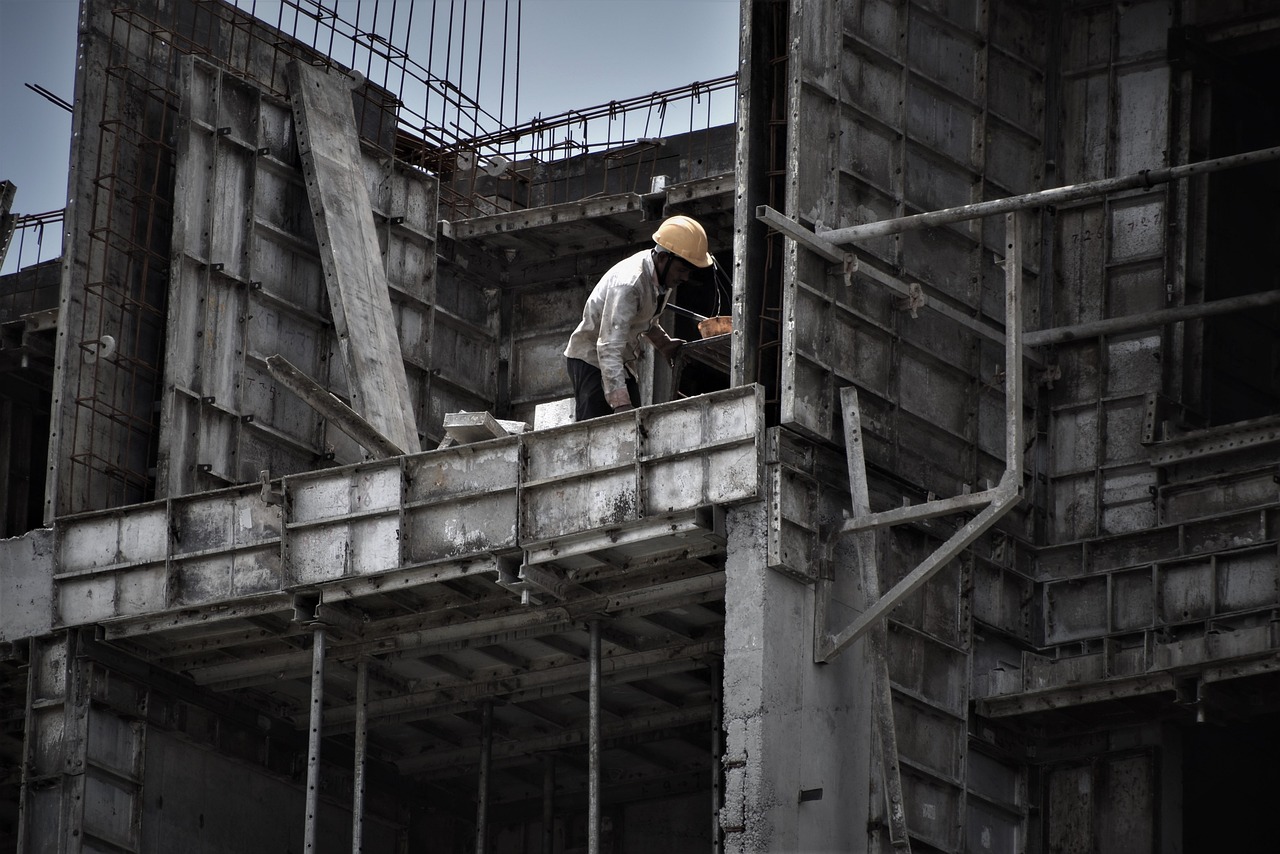
Interdisciplinary Studies
Interdisciplinary studies in the realm of archaeological sites offer a fascinating journey into the convergence of various fields, each contributing unique perspectives to unravel the mysteries of the past. Imagine history, anthropology, geology, and conservation coming together like pieces of a complex puzzle, forming a comprehensive picture of ancient civilizations and their legacies. It's akin to a symphony where each instrument plays a crucial role in creating a harmonious melody of knowledge and understanding.
Through interdisciplinary collaboration, historians delve into the narratives of bygone eras, anthropologists decode cultural practices and societal structures, geologists unearth clues from the Earth's layers, and conservationists work tirelessly to preserve fragile artifacts for future generations. This multidisciplinary approach not only enriches research endeavors but also fosters a holistic comprehension of the interconnectedness of human societies throughout history.
Moreover, interdisciplinary studies at archaeological sites spark innovation and creativity, leading to groundbreaking discoveries and interpretations. The synergy between different disciplines cultivates a fertile ground for intellectual exchange, where ideas flow freely, challenging conventional wisdom and pushing boundaries of knowledge. It's a dynamic ecosystem where experts from diverse backgrounds collaborate, debate, and ultimately contribute to expanding the horizons of archaeological research.
Picture a team of experts standing amidst the ruins of an ancient city, each bringing their specialized knowledge to the table. The historian uncovers the political intrigues of the ruling elite, the anthropologist deciphers the daily lives of ordinary citizens, the geologist reveals the geological forces that shaped the landscape, and the conservationist devises strategies to protect fragile artifacts. Together, they weave a tapestry of insights that offer a glimpse into the past and shed light on the complexities of human civilization.

Technology and Innovation
Technology and innovation play a pivotal role in revolutionizing archaeological research and education. The integration of cutting-edge technologies has transformed how we explore and interpret ancient sites, bringing history to life in ways never thought possible. One of the remarkable advancements is the utilization of 3D scanning technology, allowing archaeologists to create detailed digital replicas of artifacts and structures with unparalleled accuracy. These virtual reconstructions provide a captivating visual experience for students and enthusiasts, enabling them to interact with historical objects virtually.
Furthermore, digital storytelling has emerged as a powerful tool in conveying the narratives of archaeological discoveries. Through multimedia presentations and interactive platforms, researchers can engage audiences in immersive storytelling experiences, bridging the gap between the past and the present. This innovative approach not only enhances educational outreach but also fosters a deeper appreciation for the cultural significance of archaeological sites.
Moreover, the use of drones and aerial imaging has revolutionized the way we survey and map archaeological landscapes. By capturing high-resolution aerial photographs and conducting aerial surveys, researchers can uncover hidden features and gain new insights into ancient civilizations. This aerial perspective offers a unique vantage point, allowing experts to analyze site layouts, detect buried structures, and track changes in landscapes over time.
In addition to technological advancements, the integration of data analytics and machine learning has accelerated the pace of archaeological research. By processing vast amounts of data and patterns, researchers can identify trends, make connections, and extract valuable information from complex archaeological datasets. This analytical approach not only streamlines the research process but also opens up new possibilities for understanding the complexities of past societies.
Overall, technology and innovation have transformed the field of archaeology, offering exciting opportunities for exploration, interpretation, and preservation. By embracing these advancements, archaeological sites continue to serve as dynamic educational resources that inspire curiosity, spark imagination, and connect us to the fascinating stories of our ancestors.

Sustainable Tourism Practices
Exploring how ancient archaeological sites offer valuable educational opportunities for students, researchers, and the general public, fostering a deeper understanding of history, culture, and human civilization.
Engaging hands-on activities and guided tours at archaeological sites provide immersive learning experiences that enhance historical knowledge and promote a sense of connection with the past.
The importance of archaeological sites in preserving and safeguarding cultural heritage, allowing future generations to appreciate and learn from the rich history of civilizations that came before.
The role of archaeological sites as hubs for research and discovery, offering insights into ancient societies, technological advancements, and cultural practices through excavation and analysis.
How archaeological sites serve as focal points for community engagement, fostering local pride, tourism, and economic development while promoting awareness of cultural history and heritage.
Exploring the interdisciplinary nature of archaeological sites, where fields such as history, anthropology, geology, and conservation converge to unravel the mysteries of the past and present.
The integration of technology and innovation in archaeological research, including 3D scanning, virtual reconstructions, and digital storytelling, enhancing educational experiences and preservation efforts.
When it comes to sustainable tourism practices at archaeological sites, striking a balance between visitor access and conservation efforts is crucial. By implementing responsible tourism strategies, such as limiting visitor numbers, promoting eco-friendly transportation options, and educating visitors about the importance of preservation, these sites can be protected for future generations to enjoy. Sustainable tourism practices also involve collaborating with local communities to ensure that economic benefits are shared equitably and that cultural heritage is respected and preserved.
Archaeological sites act as platforms for global perspective and cultural exchange, facilitating cross-cultural dialogue, collaboration, and the sharing of knowledge to enrich educational experiences worldwide.
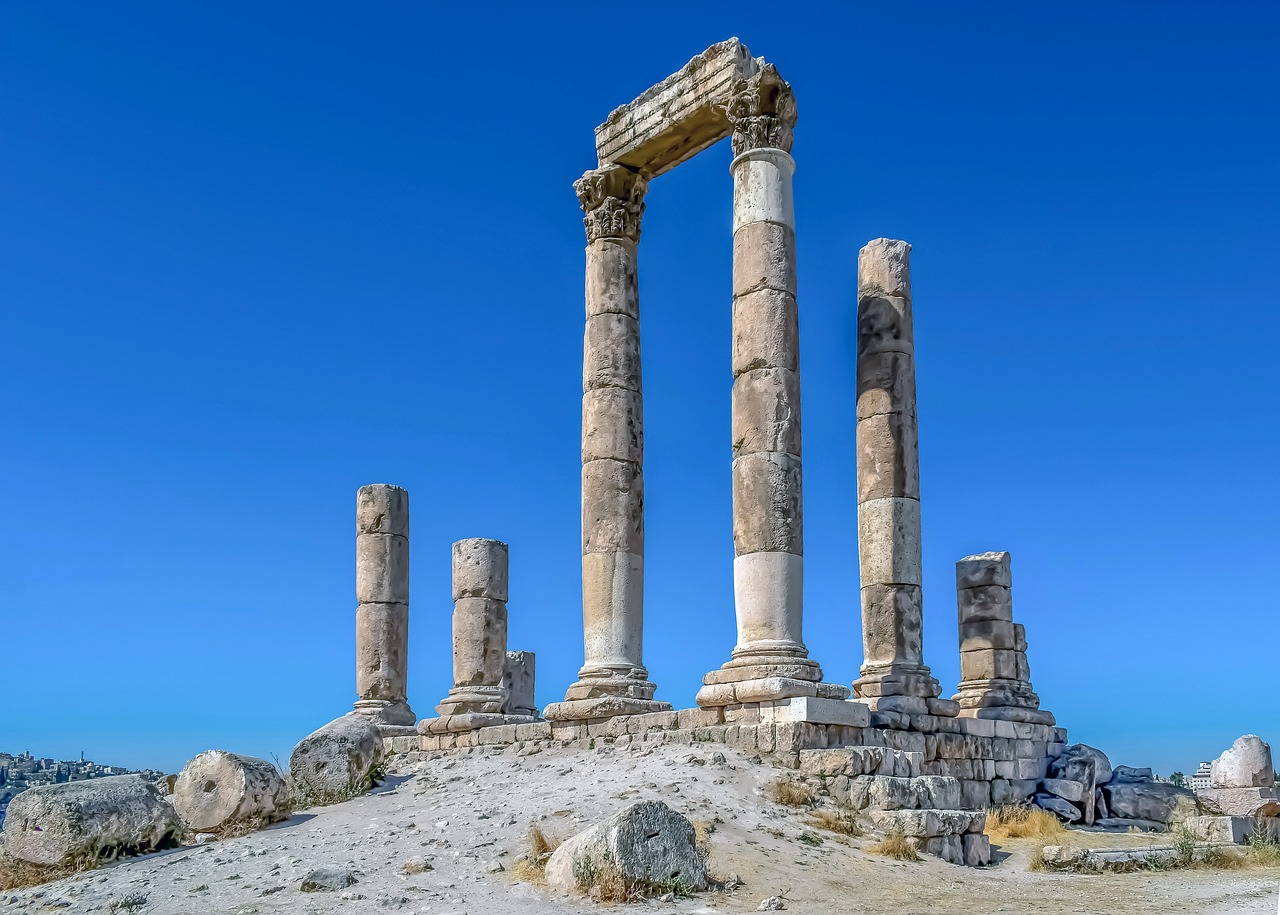
Global Perspective and Cultural Exchange
When we talk about archaeological sites, we often focus on their historical significance and cultural value. However, these sites are not just relics of the past; they also serve as powerful platforms for global perspective and cultural exchange. Imagine stepping into an ancient city or temple, feeling the echoes of a long-lost civilization reverberate through the stones. It's like traveling back in time, immersing yourself in a world that existed centuries ago.
Archaeological sites offer a unique lens through which we can view different cultures and societies, providing a global perspective that transcends borders and time periods. By studying the artifacts, architecture, and inscriptions left behind by ancient civilizations, we gain insights into their beliefs, customs, and way of life. This exchange of knowledge fosters a deeper understanding and appreciation of diverse cultures around the world.
Moreover, archaeological sites serve as meeting points for people from various backgrounds, sparking conversations and collaborations that transcend linguistic and cultural barriers. Visitors from different parts of the world come together to explore these sites, sharing their own perspectives and experiences. This cultural exchange not only enriches individual journeys but also contributes to a broader dialogue on heritage preservation and global citizenship.
Through the lens of archaeology, we can appreciate the interconnectedness of human history and celebrate the diversity of cultural expressions that have shaped our world. By promoting cross-cultural dialogue and collaboration, archaeological sites play a vital role in fostering mutual respect, understanding, and cooperation among people from all walks of life.
Frequently Asked Questions
- What educational opportunities do archaeological sites offer?
Archaeological sites provide valuable educational experiences by offering insights into history, culture, and human civilization through interactive learning activities and guided tours.
- How do archaeological sites contribute to the preservation of cultural heritage?
Archaeological sites play a crucial role in safeguarding cultural heritage by preserving ancient artifacts, structures, and knowledge for future generations to appreciate and learn from.
- Why are archaeological sites important for research and discovery?
Archaeological sites serve as hubs for research and discovery, allowing researchers to uncover insights into ancient societies, technological advancements, and cultural practices through excavation and analysis.
- How do archaeological sites engage with the local community?
Archaeological sites foster community engagement by promoting local pride, tourism, and economic development, while raising awareness about cultural history and heritage among residents and visitors.
- What interdisciplinary fields converge at archaeological sites?
Archaeological sites bring together disciplines such as history, anthropology, geology, and conservation to unravel the mysteries of the past and present, showcasing the interdisciplinary nature of archaeological studies.
- What role does technology play in archaeological research?
Technology and innovation enhance archaeological research through tools like 3D scanning, virtual reconstructions, and digital storytelling, enriching educational experiences and preservation efforts at archaeological sites.
- Why is promoting sustainable tourism practices crucial for archaeological sites?
Promoting sustainable tourism practices ensures the long-term preservation of archaeological sites by balancing visitor access with conservation efforts and community involvement, safeguarding these cultural treasures for future generations.
- How do archaeological sites facilitate global cultural exchange?
Archaeological sites serve as platforms for global cultural exchange by fostering cross-cultural dialogue, collaboration, and the sharing of knowledge, enriching educational experiences and promoting cultural understanding worldwide.

